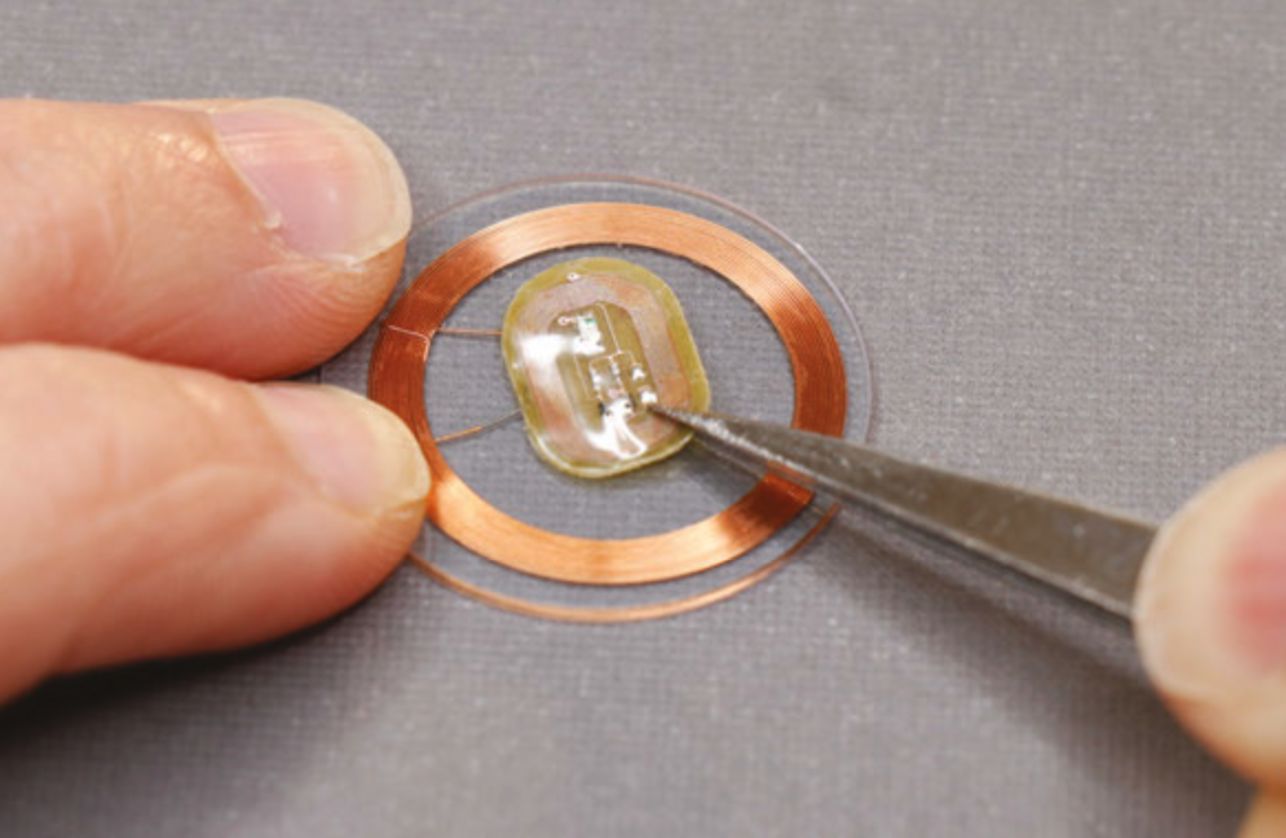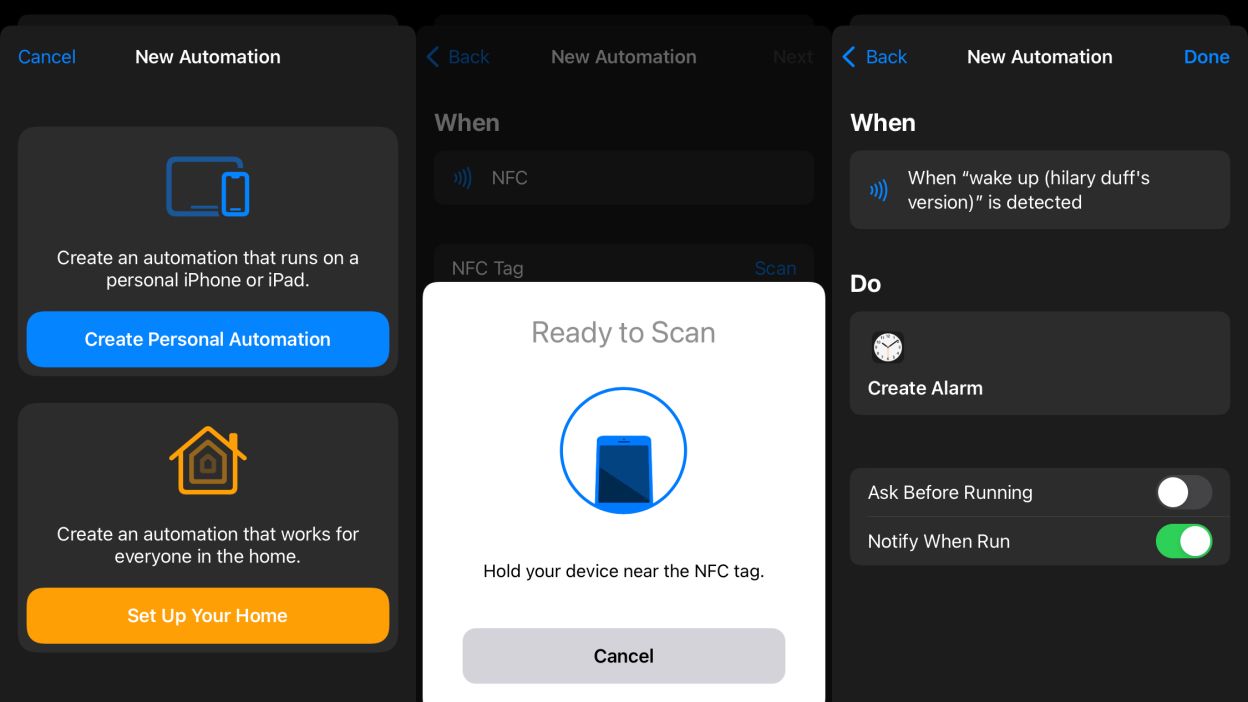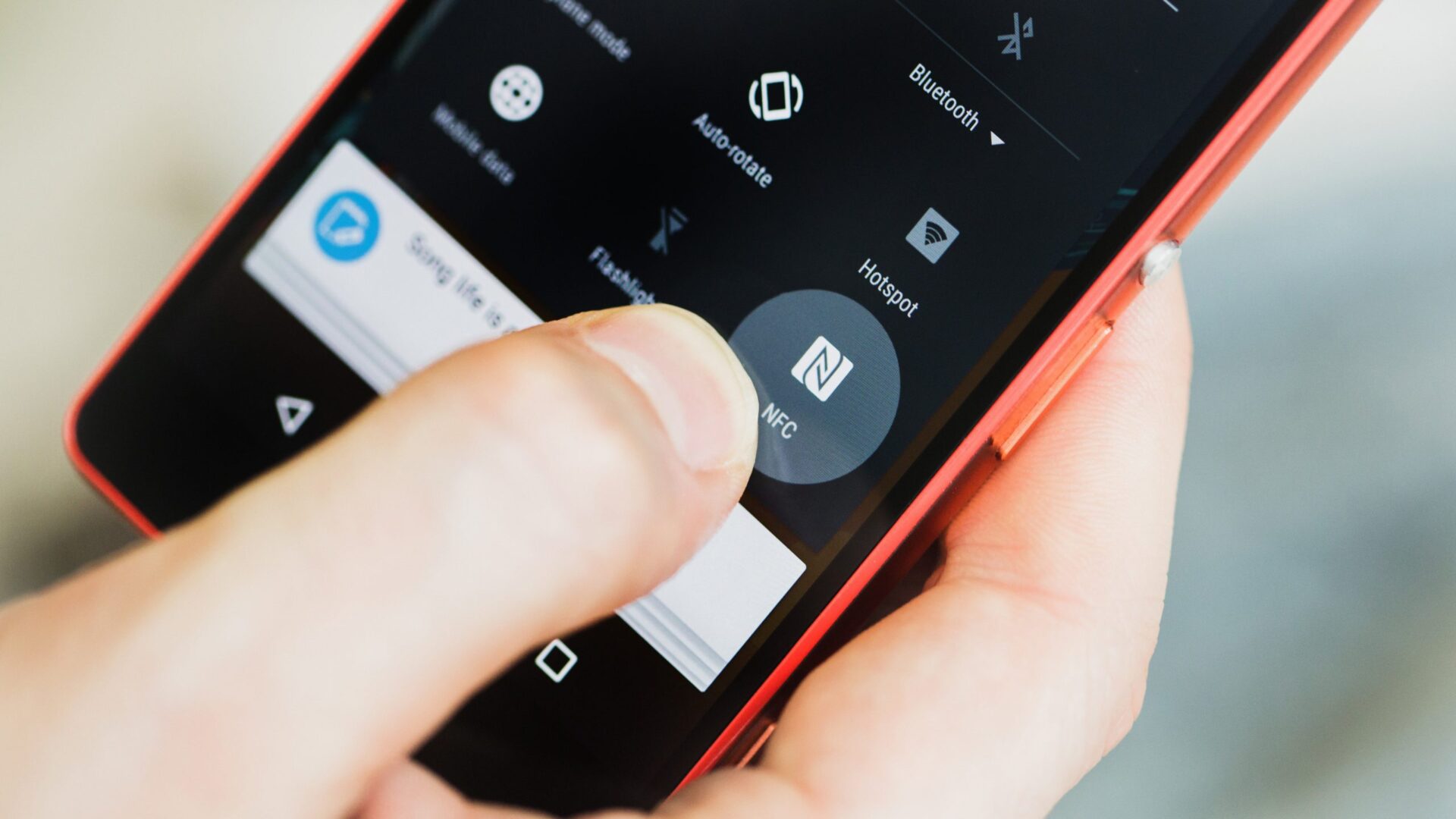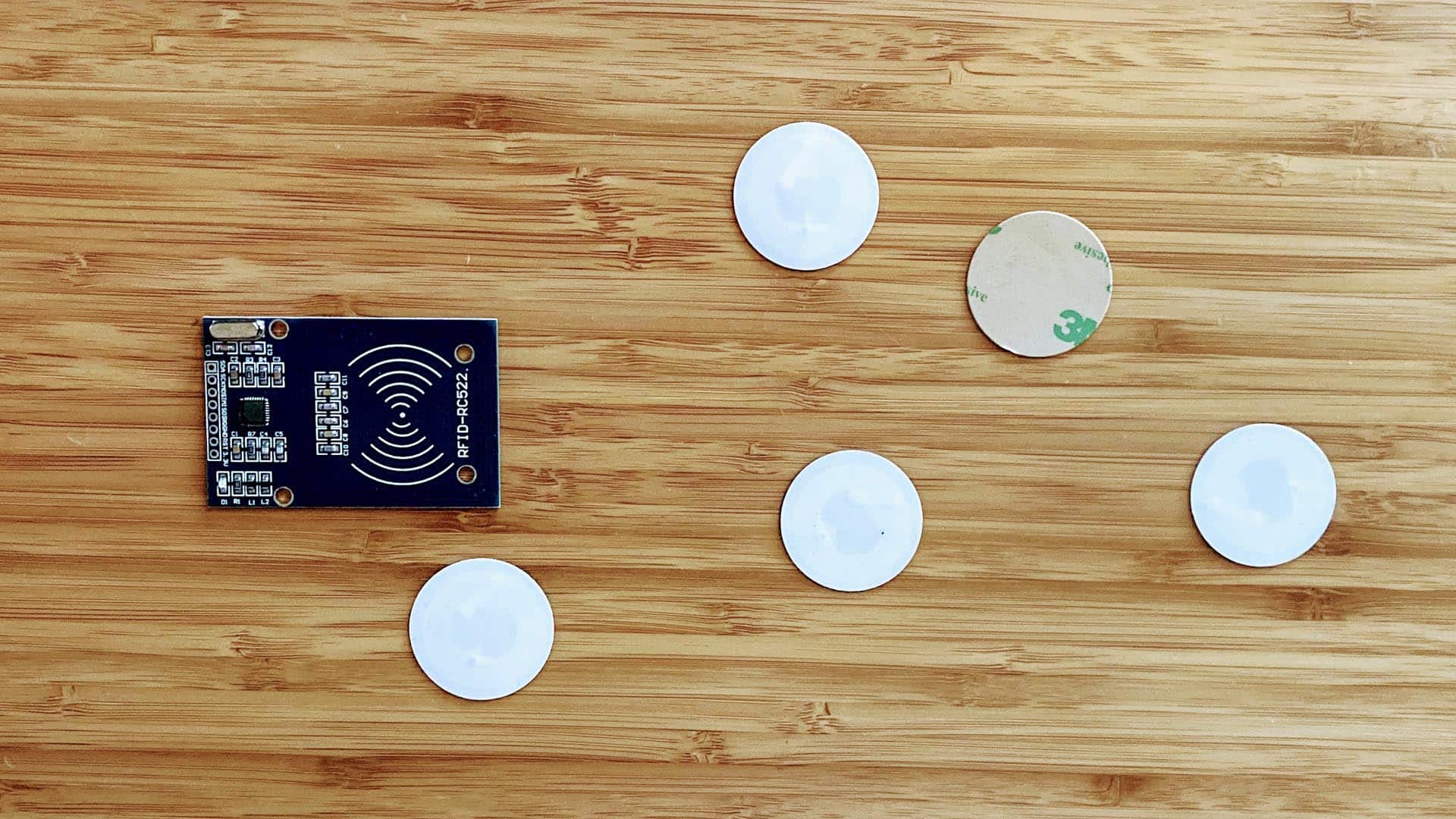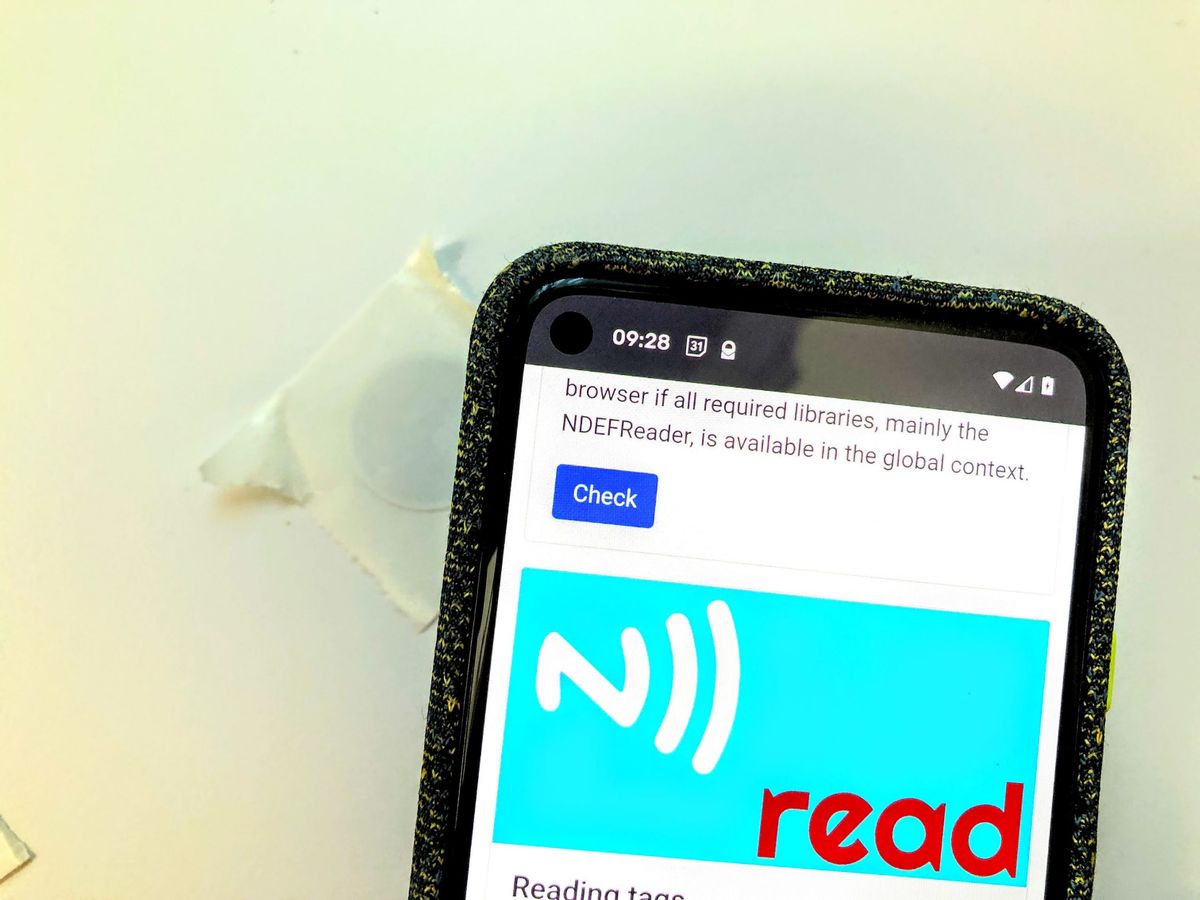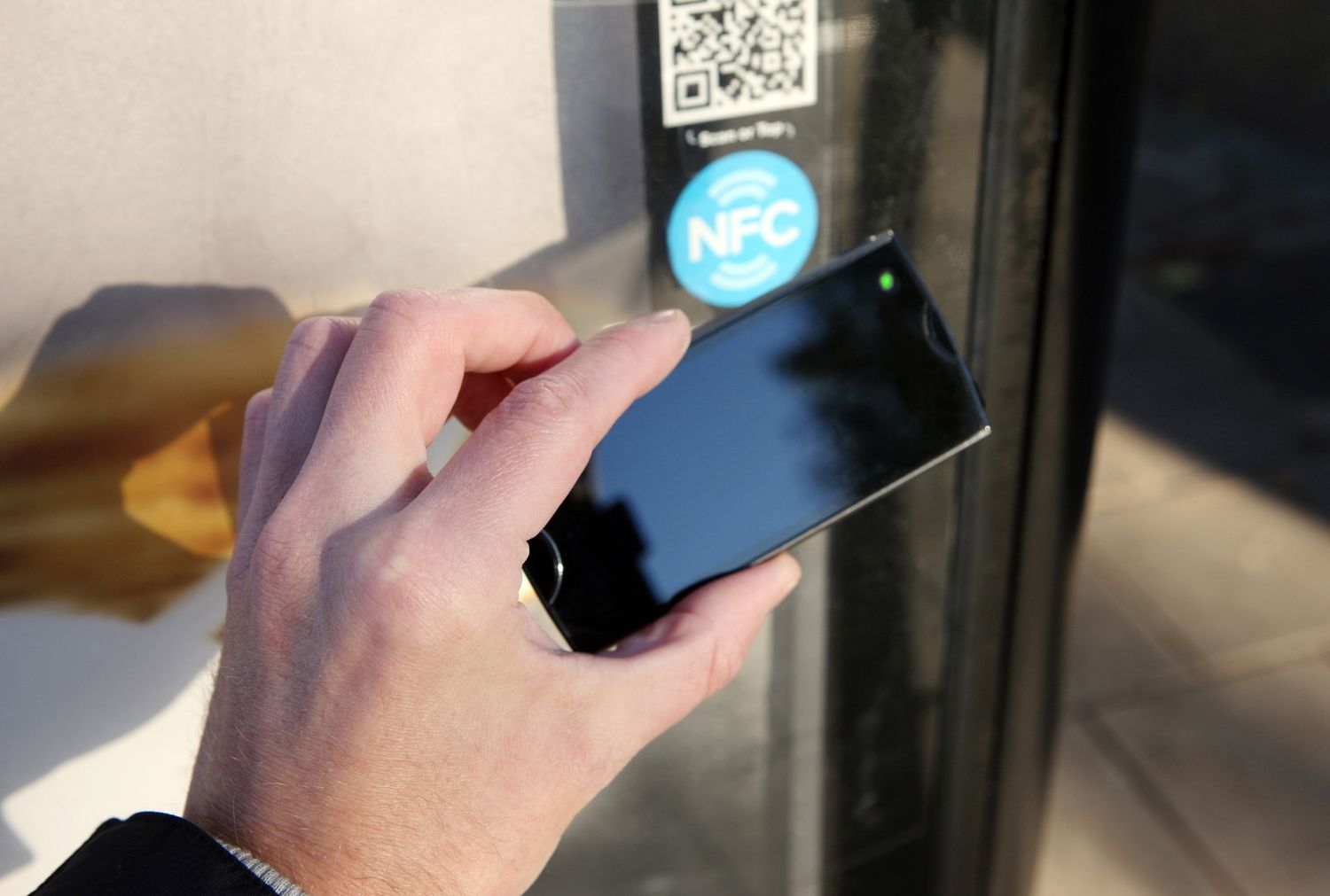What is an NFC Tag?
An NFC (Near Field Communication) tag is a small device that contains a microchip and an antenna, capable of wirelessly exchanging data with compatible devices. This technology enables quick and effortless communication between devices, simply by bringing them close to each other. NFC tags are commonly used to trigger actions or provide information when they are tapped or scanned by a smartphone or other NFC-enabled devices.
These tags come in various forms, including stickers, cards, keychains, and even embedded within products or packaging. They can store different types of data, such as URLs, contact information, text, or instructions. NFC tags are versatile and can be applied in a wide range of applications, from product authentication and marketing campaigns to access control and automation.
Unlike QR codes or barcodes, NFC tags do not require a visual scan. Instead, they rely on the close proximity of the NFC-enabled device to activate communication. This makes NFC tags more convenient and user-friendly, eliminating the need for complex scanning processes.
NFC technology has gained popularity in recent years due to its ease of use and compatibility with smartphones and other devices. Many modern smartphones, particularly those running on Android or iOS operating systems, come equipped with built-in NFC capabilities, making it accessible for a large user base.
In summary, NFC tags are small devices that utilize the NFC technology to enable wireless communication between devices. They are versatile and can be applied in a wide range of contexts. Whether it’s for marketing, automation, or enhancing user experience, NFC tags offer a convenient and effective solution for data exchange and interaction.
Types of NFC Tags
NFC tags come in different forms and varieties, each with its own features and capabilities. Understanding the different types of NFC tags available can help you choose the right one for your specific needs. Here are some common types:
- NFC Stickers: These are adhesive tags that can be easily attached to various surfaces, such as posters, products, or packaging. They are lightweight, flexible, and can be customized with designs or logos, making them ideal for marketing and branding purposes.
- NFC Cards: Similar to traditional ID cards or access cards, NFC cards have a slim and rigid form factor. They are commonly used for applications such as contactless payments, access control, or membership cards.
- NFC Keychains: These tags are designed to be attached to keychains or lanyards, making them portable and easily accessible. NFC keychains are often used for personal identification or access control in events or organizations.
- NFC Wristbands: Wristbands equipped with NFC technology are becoming increasingly popular, especially in the realm of events and conferences. They offer a secure and convenient way to manage attendee registration, access control, and even cashless payments.
- NFC Labels: NFC labels are more durable and resistant to environmental factors. They are commonly used in applications where the tag may be exposed to harsh conditions, such as outdoor signage or asset tracking.
- NFC Implants: These advanced NFC tags are designed to be implanted under the skin and are often used in medical applications, such as patient identification or accessing medical records.
Each type of NFC tag has its own advantages and use cases. Consider the specific requirements of your project or application to determine which type of NFC tag will best suit your needs.
Choosing the Right NFC Tag for Your Needs
When selecting an NFC tag, it’s essential to consider factors such as functionality, durability, and compatibility with your intended application. Here are some key points to consider when choosing the right NFC tag for your needs:
- Functionality: Determine the specific purpose of your NFC tag. Are you using it for marketing campaigns, access control, or automation? Different types of NFC tags offer varying capabilities, such as read-only or read-write functionality.
- Memory Capacity: Consider the amount of data you need the NFC tag to store. Some tags have limited memory, suitable for storing URLs or basic text information, while others offer larger storage capacities for more extensive data requirements.
- Form Factor: Choose an NFC tag that is suitable for the intended application. For example, if you need a tag for access control, consider using NFC cards or keychains. If you’re looking for a promotional tool, NFC stickers or labels might be a better fit.
- Durability: Assess the conditions in which the tag will be used. If it will be exposed to moisture, extreme temperatures, or physical stress, opt for more durable options like NFC labels or wristbands, which are designed to withstand such environments.
- Compatibility: Ensure that the NFC tag is compatible with your target devices. Check the specifications and compatibility of the tag with the operating systems, NFC-enabled smartphones, or devices you plan to use for reading and interacting with the tag.
- Budget: Consider your budget limitations when selecting an NFC tag. The cost can vary based on factors such as memory capacity, form factor, and durability. Evaluate your requirements and weigh them against the price to find a suitable balance.
By carefully considering these factors, you can choose the right NFC tag that will meet your specific needs, ensuring optimal performance and a seamless user experience for your application.
Preparing Your Smartphone or Device
Before you can start using NFC tags with your smartphone or device, there are a few steps you need to take to ensure everything is set up correctly. Here’s how to prepare your smartphone or device for NFC tag interaction:
- Check NFC Compatibility: Verify that your smartphone or device is NFC-enabled. Most modern smartphones, particularly Android and iOS devices, come with built-in NFC capabilities. However, it’s always a good idea to double-check the specifications or consult the user manual of your device to confirm NFC support.
- Enable NFC: Once you’ve confirmed NFC compatibility, enable the NFC feature on your device. Go to the device settings and look for the NFC or Connectivity section. From there, you can toggle the NFC option to turn it on.
- Enable Tap & Pay (Optional): If you plan on using NFC for contactless payments, ensure that the Tap & Pay feature is also enabled in your device’s settings. This option may be found within the NFC settings or in a separate section specifically for payment options.
- Update Software: Keep your device’s operating system and NFC-related apps up to date. Regularly check for software updates and install them to ensure compatibility, performance improvements, and bug fixes.
- Clear Obstructions: Remove any protective cases or covers that may hinder NFC communication. Some cases, especially those made of metal or with magnetic components, can interfere with NFC signals. It’s best to have a clear and unobstructed area for NFC interactions.
Once you’ve completed these preparatory steps, your smartphone or device will be ready for NFC tag interactions. You can now proceed to install a suitable NFC tag reading app and start exploring the exciting possibilities that NFC technology offers.
Installing an NFC Tag Reading App
To fully utilize NFC tags with your smartphone or device, you’ll need to install an NFC tag reading app. These apps allow you to read and interact with the content stored on NFC tags. Here’s a step-by-step guide on how to install an NFC tag reading app:
- Search for NFC Apps: Go to your device’s app store, such as the Google Play Store for Android devices or the App Store for iOS devices. Search for “NFC tag reader” or “NFC reader” to find a variety of NFC tag reading apps available.
- Read Reviews and Ratings: Before downloading an NFC tag reading app, take the time to read user reviews and ratings. Look for apps that have positive feedback, high ratings, and a significant number of downloads. This will help you ensure that you’re choosing a reliable and well-performing app.
- Check Compatibility: Verify that the NFC tag reading app is compatible with your device’s operating system and NFC capabilities. Make sure to review the app’s requirements and compatibility information listed in the app store.
- Download and Install: Once you’ve selected the NFC tag reading app that suits your needs, click on the “Install” or “Download” button to initiate the installation process. Follow the on-screen prompts to complete the installation.
- Grant App Permissions: After the installation is complete, open the app and grant it the necessary permissions to access your device’s NFC functionality. This may include granting permission to read NFC tags, access the device’s storage, or enable other relevant features.
Now that you have successfully installed an NFC tag reading app, you’re ready to start using NFC tags with your smartphone or device. Launch the app and bring the NFC tag close to the device’s NFC sensor to initiate communication. The app will read the tag’s content and can perform various actions based on the stored data.
Remember to keep the NFC tag’s antenna area in close proximity to your device’s NFC sensor for a reliable and efficient reading experience. Experiment with different NFC tags and explore the possibilities of this technology to enhance your daily life, streamline tasks, and enjoy the convenience and versatility that NFC offers.
Understanding NFC Tag Encoding
NFC tag encoding is the process of writing or programming data onto an NFC tag. It involves formatting the information in a specific way so that it can be read and interpreted by NFC-enabled devices. Here’s a breakdown of the key aspects of NFC tag encoding:
- Data Formats: NFC tags can store various types of data, including URLs, text, contact information, or instructions. The data format depends on the application or purpose of the tag. For example, a marketing NFC tag may store a URL that directs users to a specific webpage, while an access control NFC tag may contain encrypted data for authentication purposes.
- Encoding Standards: NFC tags adhere to international standards to ensure compatibility across different devices. The most common standards for NFC tag encoding include NDEF (NFC Data Exchange Format), which defines the structure and encoding of the data stored on the tag, and MIME (Multipurpose Internet Mail Extensions) types, which specify the type of data stored on the tag.
- Writing Tools: To encode NFC tags, you’ll need a compatible device or NFC writer. Smartphone apps, dedicated NFC writers, or certain software programs can facilitate the writing process. These tools allow you to input the desired data and format it according to the NDEF standards before writing it onto the tag.
- Security Considerations: Depending on the application, you may need to consider security measures when encoding NFC tags. For sensitive applications like payments or access control, encryption or authentication methods can be implemented to enhance security and prevent unauthorized access or tampering.
- NFC Tag Capacity: NFC tags have limited storage capacity, typically ranging from a few kilobytes to a few megabytes. It’s important to consider the data size and ensure it fits within the tag’s capacity. If the data exceeds the tag’s capacity, it may need to be compressed, or a larger capacity tag may be required.
Understanding NFC tag encoding allows you to prepare the data correctly and ensure compatibility with NFC-enabled devices. It’s essential to follow the NDEF standards, select the appropriate data format, and consider security measures when encoding the NFC tags to ensure seamless communication and optimal performance.
Writing Content to an NFC Tag
Writing content to an NFC tag involves programming the desired data onto the tag, allowing it to be read and accessed by NFC-enabled devices. Here are the steps to write content to an NFC tag:
- Prepare the Data: Gather the data you want to store on the NFC tag. This can include URLs, text, contact information, or other relevant data. Ensure that the data is formatted correctly and compatible with the intended application.
- Select an Encoding Tool: Choose an NFC tag encoding tool that is compatible with your device and operating system. There are various smartphone apps available that offer NFC encoding capabilities. Alternatively, you can use dedicated NFC writers or software programs.
- Open the NFC Encoding App: Launch the NFC encoding app on your device or open the NFC writer software on your computer. Follow the app or software instructions to initialize the writing process.
- Tap or Select the NFC Tag: Bring the NFC tag close to your device’s NFC sensor or select it within the app or software. Ensure that the tag is within the range and properly aligned for a successful writing process.
- Input the Data: Enter the desired data into the encoding tool. Depending on the app or software, you may have options to input text, select URLs, or import contact information from your device’s address book. Follow the provided prompts to input and format the data.
- Validate and Write: Once you have entered the data, review it for accuracy and validation. Ensure that the data is properly formatted and suited for the intended application. When you are ready, initiate the writing process within the encoding tool. The app or software will write the data onto the NFC tag.
- Verify the Writing: After the writing process is complete, use the NFC encoding app or software to verify that the data has been successfully programmed onto the NFC tag. Cross-check the stored content with the original data to ensure accuracy.
By following these steps, you can successfully write content onto an NFC tag. Make sure to review the data before writing it onto the tag to avoid errors or inconsistencies. With the properly encoded NFC tag, you can now utilize it for various applications, such as marketing, access control, automation, or any other use that suits your needs.
Proper Placement and Adhesion
When using NFC tags, proper placement and adhesion are crucial to ensure reliable communication and optimal performance. Here are some key considerations for proper placement and adhesion of NFC tags:
- Surface Compatibility: NFC tags can be applied to various surfaces, such as paper, plastic, glass, or metal. However, it’s important to note that metal surfaces can interfere with NFC signals. If you are applying an NFC tag to a metal surface, consider using an NFC tag specifically designed for metal surfaces or utilizing an NFC spacer to create a gap between the tag and the metal surface.
- Tag Orientation: NFC tags have an antenna, and the position and orientation of the tag can impact signal strength. Ensure that the antenna area of the tag is facing the desired reading direction to optimize communication.
- Clean and Dry Surface: Before applying an NFC tag, ensure that the surface is clean and dry. Any dirt, dust, or moisture can impact the adhesive’s effectiveness and may hinder NFC communication. Clean the surface with a mild detergent or alcohol wipe, and allow it to dry completely before attaching the tag.
- Proximity to Other Tags: If multiple NFC tags are placed close to each other, it’s important to ensure that they are spaced apart to avoid interference. When tags are too close, the signals can overlap, leading to unreliable or inaccurate readings.
- Adhesive Strength: Choose an NFC tag with an adhesive backing that is appropriate for the intended surface. Adhesive strengths can vary, so consider the surface material and environmental conditions when selecting an NFC tag. Some surfaces may require stronger adhesive or additional measures, such as using adhesive glue or tape.
- Tactile Feedback: Consider incorporating tactile or visual cues to indicate the location of the NFC tag to users. This can involve using textured stickers, raised labels, or color codes to help users locate and position their devices correctly for interaction.
Adhering to these placement and adhesion guidelines will ensure that the NFC tag is properly attached and easily accessible for interaction. By optimizing the placement and adhesion of NFC tags, you can enhance the user experience and ensure reliable and consistent NFC communication for your intended applications.
Testing and Troubleshooting Your NFC Tag
After properly setting up and placing your NFC tag, it’s important to test and troubleshoot its functionality to ensure it is working as intended. Here are some steps you can take to test and troubleshoot your NFC tag:
- NFC Tag Read Test: Use an NFC-enabled device to perform a read test on the tag. Bring your smartphone or device close to the NFC tag and check if the device can read and display the stored information. This will verify that the tag has been encoded correctly and that the data can be read by compatible devices.
- Functionality Test: Test the functionality of the NFC tag by performing the desired actions associated with the stored data. For example, if the tag contains a URL, tap the NFC tag with your device and verify if it opens the correct webpage. If the tag is for access control, test if it grants or denies access as expected.
- Testing Different Devices: Test the NFC tag on various NFC-enabled devices to ensure compatibility and consistent performance. Some devices may have different NFC sensors or operating system versions, which can affect the reading and interaction with the tag. Verify that the tag works well across different devices to maximize its usability.
- Range Test: Test the effective range of the NFC tag by gradually moving your device closer or farther from the tag while attempting to read or interact with it. This will help you determine the optimal distance for reliable communication and identify any potential issues, such as weak signal reception or limited range.
- Troubleshooting: If you encounter any issues with the NFC tag, consider troubleshooting steps such as repositioning the tag, checking for any physical damage or obstruction, or re-encoding the tag. Consult the documentation or support resources provided by the NFC tag manufacturer or the app/software you used for encoding for specific troubleshooting guidance.
- Tag Replacement: In cases where troubleshooting efforts do not resolve the issue, you may need to consider replacing the NFC tag. Contact the manufacturer or supplier to address any defects or ensure that the tag meets the specified requirements for your application.
By thoroughly testing and troubleshooting your NFC tag, you can ensure its functionality, compatibility, and performance. Regularly review and validate the tag’s performance to address any issues promptly and maintain a seamless NFC experience for your users.
Creative Ideas for Using NFC Tags
NFC tags offer a multitude of creative possibilities for streamlining processes, enhancing user experiences, and adding convenience to various applications. Here are some innovative ideas for using NFC tags:
- Smart Home Automation: Program NFC tags to control various smart home devices. For example, tapping an NFC tag near the front door could turn on lights, deactivate the alarm system, and adjust the thermostat.
- Interactive Business Cards: Embed an NFC tag in your business card to instantly share contact information and portfolio links with a simple tap on a smartphone, eliminating the need for manual data entry.
- Product Information Tags: Attach NFC tags to products or packaging to provide customers with comprehensive information, such as ingredients, usage instructions, or links to video tutorials, enhancing the customer experience and engagement.
- Art and Exhibitions: Use NFC tags in galleries or museums to provide additional information about artwork, artists, or historical artifacts. Visitors can tap the tags to access details, audio guides, or related multimedia content.
- Event Registration and Access: Utilize NFC wristbands or badges at events for secure and efficient registration, ticketing, and access control. Attendees can tap their wristbands to check-in, make purchases, or enter restricted areas.
- Educational Tools: Place NFC tags in textbooks or learning materials to offer supplementary resources, interactive quizzes, or quick access to online study materials, making learning more engaging and personalized.
- Asset Tracking: Attach NFC tags to valuable assets or equipment for efficient tracking and inventory management. By scanning the tags, you can update the location, maintenance history, or other relevant data.
- Personalized Experiences: Create personalized experiences for customers by using NFC tags in retail environments. For example, customers can tap a product to access personalized recommendations, discounts, or loyalty rewards.
- Patient Care: In healthcare settings, use NFC tags to streamline patient identification, access medical records, or provide medication reminders, helping to improve efficiency and patient safety.
- Social Sharing: Generate instant social media interactions by placing NFC tags in public spaces, allowing people to check-in, like, or share content through a simple tap.
These are just a few examples of the creative ways NFC tags can be utilized. The possibilities are endless, limited only by your imagination and the specific needs of your application. Explore different use cases and consider how NFC tags can enhance convenience, foster engagement, and optimize processes in your intended context.
Conclusion
NFC tags provide a convenient and versatile way to enhance interactions between devices and users. By understanding the different types of NFC tags and choosing the right one for your needs, you can unlock a world of possibilities. Preparing your smartphone or device, installing an NFC tag reading app, and understanding NFC tag encoding ensure a smooth and seamless experience.
Proper placement and adhesion of NFC tags, along with thorough testing and troubleshooting, will ensure reliable functionality. With creativity, NFC tags can be employed in various innovative ways, such as home automation, interactive business cards, or personalized retail experiences. The potential for creative applications across different industries is vast.
Whether you are a business owner, marketer, event organizer, or simply an enthusiast, utilizing NFC tags can bring convenience, efficiency, and engagement to your applications. Explore the boundless opportunities that NFC technology offers and stay at the forefront of innovation.
Incorporate NFC tags into your next project and unleash the benefits of this advanced technology. With proper implementation and a touch of creativity, NFC tags can revolutionize the way users interact with devices, products, and the world around them.









